Can you tell us about your experience of body awareness in yoga?
M: Body awareness is a very broad and complex topic, I would not like to limit myself to yoga only, because the way I practise and teach movement goes beyond asanas. I like to say that I teach conscious movement :) I try to work using various techniques and methods that are close to me. I like variety, experiment and multidisciplinarity - I use dance techniques, functional training, pilates, animal flow and others.
I have been dancing contemporary dance and solo Irish dance myself for years, and by the time I started practising yoga, I already had a really high awareness of the body. I started with Ashtanga yoga, which is a very physically demanding method. However, it was quite easy for me because I already had the physical preparation. Though, it was only many years of systematic practice that allowed me to discover many nuances and understand the meaning of asanas and breathing even more deeply. I believe that only regularity and tender discipline allow you to build awareness of the body and deep connection with it. There aren't any shortcuts. Just as you cannot learn a foreign language without practising, you cannot communicate with your body without learning to understand the messages it sends you and paying attention to it. 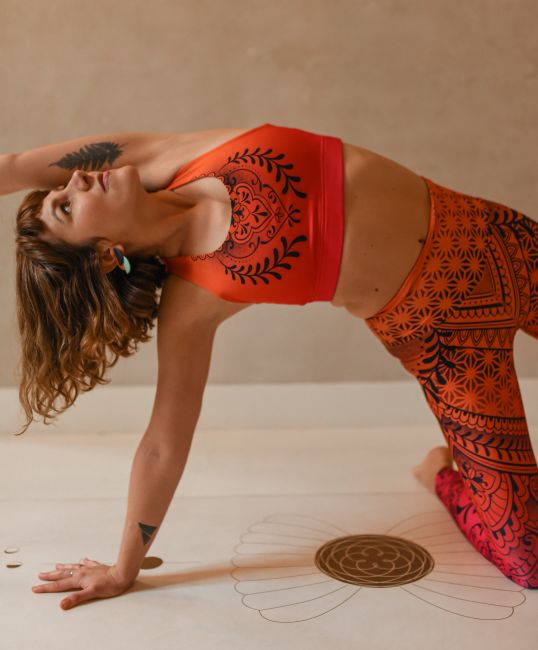
What about other people's body awareness? With people who come to your classes?
OM: Unfortunately, the way we function on a daily basis does not make it easier for us to establish a deeper relationship with our own body and respond to its signals. A frequent motivation of people starting the practice is the desire to improve their well-being at the most basic level - getting rid of back pain, increasing flexibility, soothing the nervous system. Often people realise at some point in their lives how much they have cut off and neglected their bodies and they come to change that. There are also those who come totally “broken” and unwilling, repeating that “I am unfit for yoga because I am too stiff”. Sounds a bit like “I’m too dirty to take a shower” to me. A bit absurd, right? If that’s the case, if you are stiff, sore, and cut off from your body, then you need to change, react and break that state. Staying still will not make you aware that you are communicating with your body better. To change that, you have to start practising.
Can you elaborate on the tensions of people who come to you for workshops?
OM: The problem of tension both in the head and in the body is very common. Unfortunately, we have such a model of functioning that we are all tense in some way, the stress we are subject to is chronic - that is, it threatens our health. Stress from time to time is healthy for us, it has a stimulating effect. However, if there is a certain level of stress that we experience permanently, it causes various changes and damages, disturbs our mental and physical well-being. I’m talking about men and women, but I think I see a lot more of that in women. Stress likes to accumulate in the women’s pelvic area. Let’s do a little experiment. Please clench your jaw now. Do you feel your muscles tighten around your crotch and lower abdomen? Now tighten your shoulder blades, do you also feel the tightness in the lower part of your body? The muscles of the face, as well as those around the shoulder blades and shoulders are connected to the muscles of the pelvic floor. Tensing the jaw or shoulders, we feel the tension in the pelvis. When we get nervous, we often clench our jaw or tense our shoulders and neck. These are the details that we are not aware of on a daily basis, and they later affect, for example, painful intercourse or painful menstruation. For many people, their tense body and head is, after all, a driving force to do something with themselves. 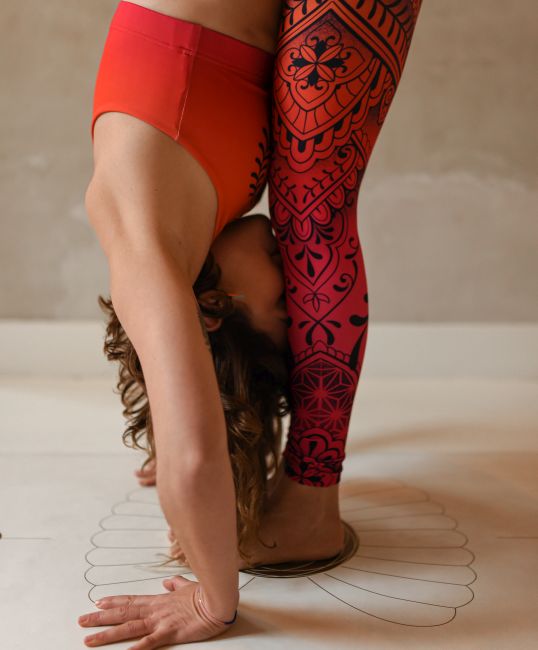
Is it enough to go on a weekend workshop with you to work on a body?
OM: Regular practise should be the foundation. Regularity, a healthy routine and discipline bring great benefits and have long-term effects. However, after the weekend workshop, people themselves say that suddenly something loosened up, softened. This relaxation in the shoulders and neck is followed by relaxation in the head. When I organise yoga trips, people often come very tense, but after less than three days you can see a huge difference in them. And these are not magic spells, such a trip is a time only for you. You leave your work, family, responsibilities, you are fed, guided in practise, rested, surrounded by people who came for the same thing as you. This makes it much easier to regenerate and release tension.
What does movement look like in yoga practise? From the outside, it may seem monotonous and very repetitive.
OM: What is fantastic about the practise of yoga and such conscious, deepened movement is that we are constantly looking for it deeper. With each subsequent practise, with each subsequent hour on the mat and in general movement, we feel our body more and more. I do not teach the asanas themselves, but also the breath and awareness of various connections in the body. What comes from what. How to lead the movement through the body so that the movement through the body so that the movement that starts from the foot can be felt in the hand. I teach how our whole body is connected. That the top of the head and the tailbone are connected to each other. What happens on the plane of the entire spine when we move. We have already done a little experiment. Clenching your jaw or tensing your shoulders, you felt the tension in your pelvic floor muscles. These are the nuances that we learn and which we often find difficult to feel at first. This is what happens when we come to class for the first time and the teacher uses images and phrases that are complex for the imagination. For example, she/he talks about moving his inner shoulder blade, or sucking in his inner ankle. And people don't know what it is at first. This is due to the unawareness of the body, but this is what we learn. This is a process.
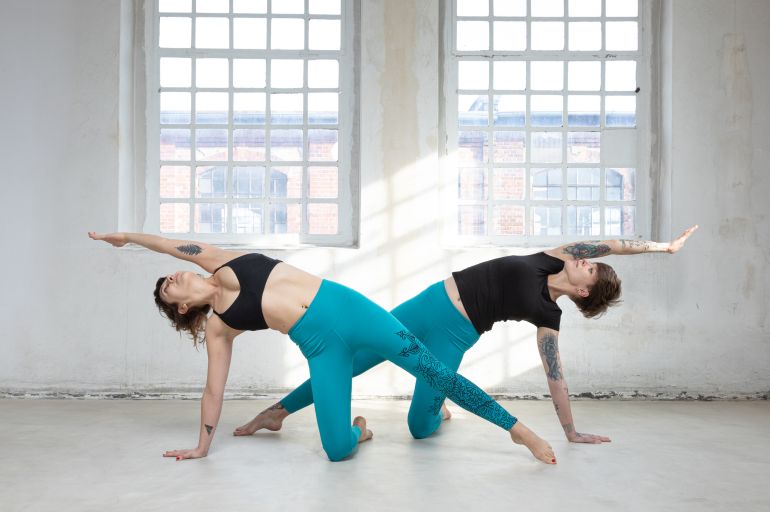
How quickly can such full body awareness be achieved, and is it even achievable?
OM: In movement, in yoga, there is no such thing as linear progress, something that can be easily measured, caught. There are many nuances here. When you successively work, practise, move, enter your body, you gradually begin to understand it more and more. Your body sends you signals, you become mindful and sensitive to those signals and that is this body awareness. In further practise, you already know what movement will be good for you today, which will help you. You already know how to breathe, how to calm your nervous system. You see what’s going on in the body. You recognise that you are feeling some kind of restlessness and notice where you feel it, whether in your shoulders, in your loins, or in your hips. This is a wonderful tool when we are aware of our body and communicate with it.
Are you, being at a high level of awareness of you body, still able to discover something?
OM: Of course! In my opinion, there is no such thing that we can learn and find out everything. Just like in life. We are learning all the time, but we are also changing. First of all, our body changes with age, with experiences. Especially the female body that experiences so much. We are pregnant, we are giving birth. Our hormonal cycles also change within one month. So thinking about practise in the context of one month that it will be the same is absurd to me. Women should adapt their practise to their menstrual cycle and work with it and then it makes sense. It is OK that I don’t have the strength before period, that I need to make a blanket burrito of myself :D Hug me. Unfortunately, often our culture and media are set up to push no matter what… And you have the right to say “Hey girl! Give it up!” This is not the time, take care of yourself, rest.
Ovulation will be the time when you blossom and you can do anything. It is important to respect where our body is at. The body also changes with age. I am not going to treat my 40 or 60-year-old body the same way I did when I was 20. You have to respect that. Muscle mass changes. The body after pregnancy is different. Similarly, when we feel different mental states. How we feel mentally is related to our body.
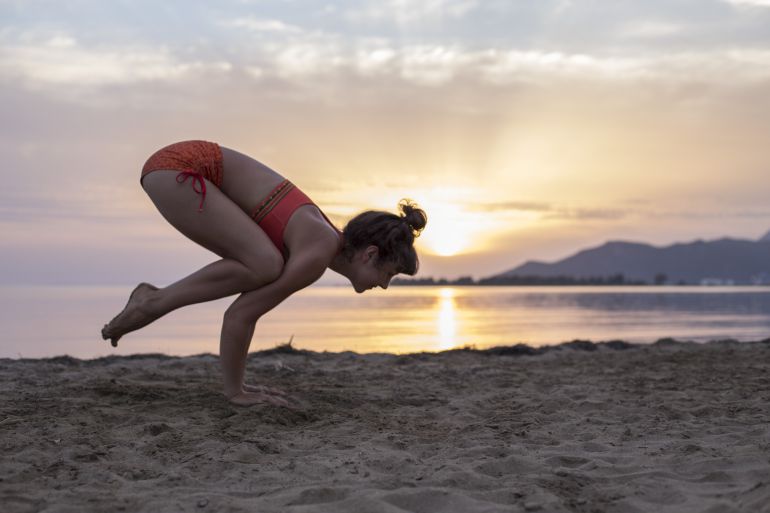
What emotions accompany the whole process of working with the body? What emotions accompany you and the people you work with?
OM: This is a very important question. Everything you have in you will come out in practise. If you have anger in you, you can feel it more strongly. But if you have been working longer, you know how to work on it with body movement. Sometimes we are not aware of certain emotions that are inside us. A nice tip is intuitive movement. But this requires even more awareness. Undoubtedly, practise is a litmus test to check what is dormant in us. First, however, we need to work the body, and only then work on the head. It is difficult to work on emotions when the body is tense, when there are a lot of blockages, pain and tension in it. Only working on the body allows you to reach what is in the head.
I assume that we always start with releasing the body, releasing tensions. In order to start thinking about meditation, about going deeper into ourselves, we first have to work through the body, breath, and only when the body and breath are in our control, then there is space to calm down the head. It is hard for me to imagine going into meditation trials when the body is tense, stiff. When all the muscles, tendons are tense, then the head will not let go either. You need to loosen up a bit, let the tension out of your body. Meditation and overhead work can take place when our body is taken care of.
Is meditation an inseparable element of yoga?
OM: It depends. You can treat yoga, and more precisely asanas, simply as a tool, without going into any philosophy, use it and feel better. Mindfulness can also be treated as tools separate from asanas, but serving our health. For me it is OK :) But I have a very rebellious approach to many issues. Or maybe just a commonsensical approach :) I believe that it is worth implementing all the practises that serve us in our everyday life. And 10-15 minutes of sitting in silence and concentration a day, is an undoubted game changer for many people. You really don’t need to cense yourself, listen to mantras and sit on an expensive meditation cushion ;) Just a moment of peace and a comfortable position, the rest is a theatre ;)
Is there anything else that affects our body?
OM: Sure thing! Good nutritious food and the way we eat it - attentive, conscious. Adequate amount of water in the diet. Good relationships with family and other people - attentive listening, presence. Being outdoors, catching sunlight. Walking barefoot to activate our feet. Touching, massaging, stroking, cuddling - giving pleasure to the body. Concern for the quality of sleep. These are probably components of our general well-being.
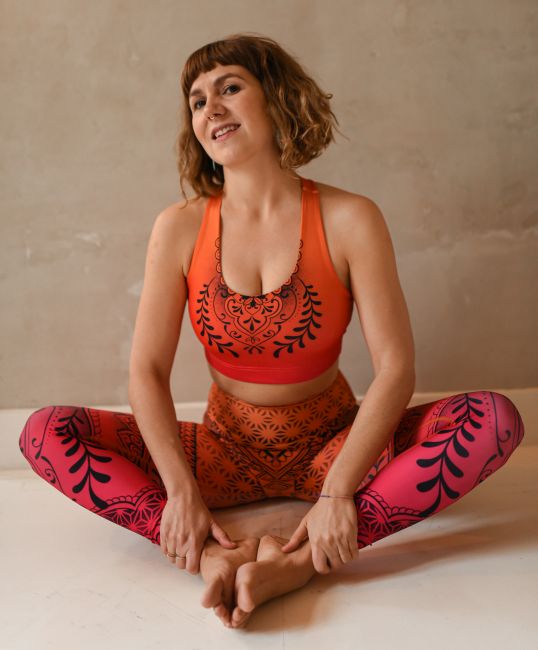
What would you say to our readers at the end?
OM: I do not have golden advice :) However, I encourage you to change. To dare to leave your comfort zone, to take greater care of yourself, to give yourself rest and pleasure. To do things with courage, from the heart and to support each other and not fixate on the results, just enjoy the action. And above all - to appreciate and not judge others, and even more above all - yourself.
Oliwia Misztur - yoga and conscious movement teacher, mother of 1,5-year-old Gustaw and 3-month-old Greta. In teaching and in her own practise, she likes exploration and fun, as well as constant learning and going beyond the usual patterns. She believes that practise should above all give joy from contact with one’s own body, teach self-observation and tenderness for oneself and the world.







Leave a Reply Cancel Reply